Achimenes: Care Features
Showers of colorful flowers makes Achimenes a beautiful houseplant. By following these care tips, you can enjoy the beauty of Achimenes and easily cultivate this lovely plant in your home.
Achimenes is a beautifully flowering perennial plant belonging to the Gesneriaceae family. Its native habitat includes the tropical forests of Central and South America. Approximately 20 species have been described, with some of them cultivated for decorative purposes.
Achimenes is a close relative of gloxinias and African violets. Among flower enthusiasts, it has gained many admirers who collect various varieties and cultivars, appreciating its prolonged blooming period that lasts throughout the growing season.
The stems of Achimenes are branching, trailing, or creeping, with some species having upright stems. The leaves are soft, slightly hairy, and serrated at the edges. The plant is particularly attractive due to its beautiful bell-shaped flowers of vivid and unusual elongated forms.
Achimenes flowers come in various colors such as white, yellow, red, and purple, often with spots or stripes. Although they fade quickly, new buds continue to bloom, ensuring a prolonged flowering period.
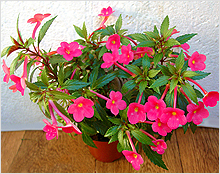
In home conditions, Achimenes often blooms twice a season, starting from May and lasting until October. The first blooming is usually the most abundant, occurring in spring or early summer. The second, less profuse blooming, takes place in early autumn, after which the plant gradually enters a period of dormancy.
Achimenes is not overly demanding as a houseplant. It is not picky but dislikes excessively dry air, abrupt temperature changes, and cold drafts. With the arrival of autumn, Achimenes stops growing, and its leaves dry up. However, the plant does not die; it merely goes dormant for the winter, similar to gloxinias. During winter, its scaly roots with dormant buds, called rhizomes, overwinter in the pot. With the increasing daylight and rising temperatures in spring, they start to sprout again.

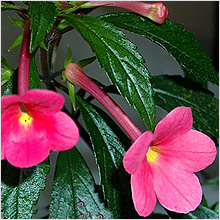
During winter, Achimenes pots should be stored in a dark, cool place, occasionally moistening the edges of the pot. Periodically checking their condition is necessary to prevent them from rotting or drying out during the dormant period.
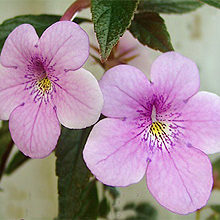
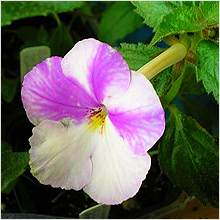
Achimenes is valued not only for its abundance of bright flowers in the warm season but also for its ease of maintenance in small urban apartments. As the cold weather approaches, there's no need to find a spot on the windowsill; instead, it can be stored in a closet, on a veranda, or in a garage until February. In spring, it can be used to easily create a blooming garden on a balcony or patio, requiring minimal care.
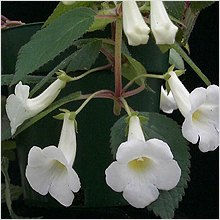
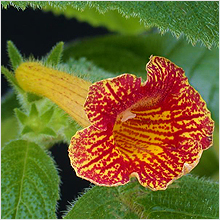
Care Tips for Achimenes
Light: Achimenes plants prefer bright light, but direct sunlight should be avoided, especially during the summer. The lighting requirements may vary depending on the variety. In shaded areas, stems tend to stretch, and flowers may lose their vibrant colors.
Temperature: During the growing season, maintain an air temperature of no less than 68°F/20°C for Achimenes, with an optimal range of 65-75°F/18-24°C. The plant is sensitive to cold drafts and sudden temperature changes. While it thrives on a constant summer temperature, overly cold nights can be harmful. As the fall season begins, temperatures can be slightly lowered but not below 15 degrees. During the dormant period, temperatures should be maintained between 50-59°F/10-15°C.
Humidity: Achimenes prefers high humidity. However, excessive spraying of its hairy leaves should be avoided to prevent spotting. Placing Achimenes on a tray with moist moss or gravel can help increase humidity. Keeping it near an aquarium or alongside a plant like cyperus, which thrives in water, is also beneficial.
Water: During the growing and flowering periods, Achimenes requires regular watering. In spring, gradually increase watering after awakening. In summer, water abundantly with room temperature water or slightly warmer. Avoid water stagnation in the pot. While bottom watering is acceptable, do not leave water in the tray for an extended period to prevent root rot. In autumn, reduce watering after flowering, and once the leaves dry, only occasionally moisten the soil 1-2 times a month.
Soil: Use a loose soil mix for Achimenes, typically composed of leafy, loamy soil, and sand in a ratio of 3:2:1. Adding humus or peat soil is recommended but not strictly necessary. Ensure good drainage, as Achimenes is sensitive to waterlogged soil. A mix for flowering plants can also be suitable.
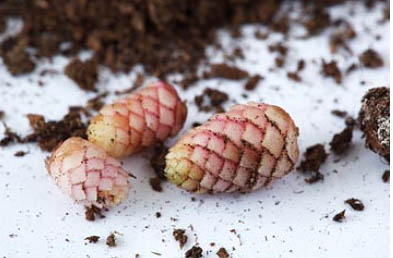
Repotting: Repot in February after the dormant period ends. Use wide pots with an ample drainage layer. Lay rhizomes horizontally and cover them with a thin layer (0.5 cm) of substrate. It's advisable to cover with plastic or glass until shoots appear.
Fertilization: Apply flowering fertilizers twice a month during the growing and flowering periods. Do not fertilize immediately after repotting, as the soil already contains sufficient nutrients.
Dormancy Period: With the onset of autumn and reduced daylight, Achimenes leaves start to yellow and die. Gradually reduce watering. Trim dried stems. Rhizomes can be left in the same pot for winter or stored in sand or sawdust in a dark, cool place (around 59°F/15°C but not below 50°F/10°C). Moisturize occasionally, usually not more than once a month. In late February, bring Achimenes pots back into the light in a room with a temperature of at least 60°F/16°C , gradually increasing watering.
Propagation: Achimenes can be propagated through rhizomes and cuttings. Propagation from seeds is not recommended as it does not preserve the specific traits of the parent plants.
Propagation through cuttings is done infrequently, with cuttings rooting in water, sand, or a mixture of equal parts sand and leafy soil. The drawback of this method is that by the start of the cold season, the young plants are still weak, with small rhizomes, and may not withstand the dormant period, which is essential for flowering. It is advised to water, fertilize, and provide supplementary light until late autumn to allow the young plants to grow, making the dormant period shorter.
The easiest method of propagation is by dividing rhizomes during repotting. Divide the expanded rhizomes so that each separated part has at least one shoot. Dry the cut surfaces and dust them with wood charcoal. Before planting, it's recommended to soak the rhizomes in a weak solution of potassium permanganate for prevention against root rot.
Diseases and Pests: Achimenes can be affected by aphids, mites, and mealybugs.
By following these care tips, you can enjoy the beauty of Achimenes and easily cultivate this lovely plant in your home.




